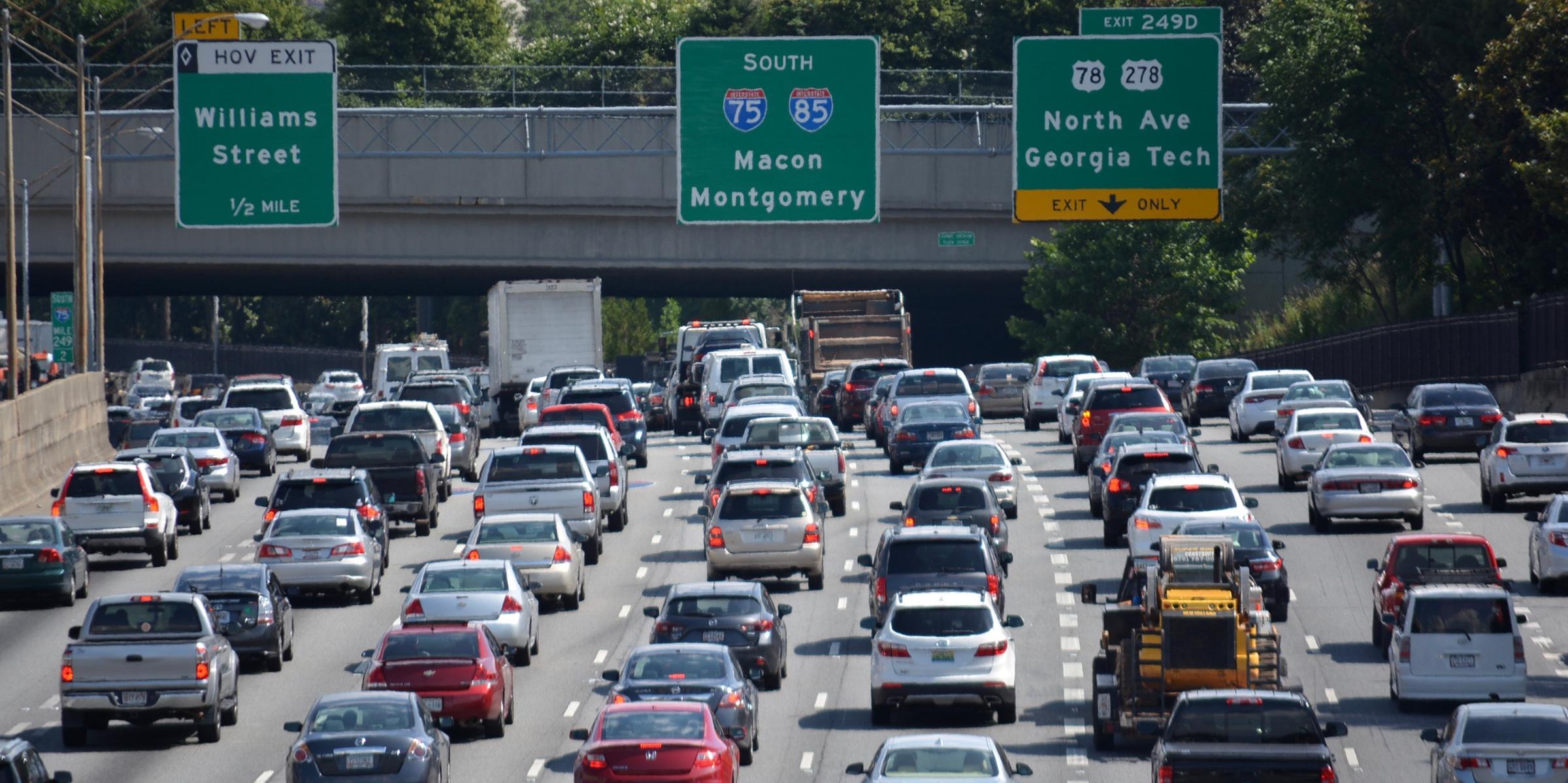Have Clean Air Rules Helped People’s Health? Atlanta Study Says Yes

New studies suggest that regulations aimed at making power plants and vehicles pollute less are leading to better air quality and improved public health.
Alison Guillory / WABE
As power plants and cars and trucks have gotten cleaner, air quality in Atlanta has improved — and so has public health.
That might seem like common sense, but in a study released Thursday, researchers at Georgia Tech and Emory didn’t take it for granted. Instead, they started by looking at regulations aimed at making power plants and vehicles pollute less. Then they asked, did those rules actually reduce emissions? And did that mean cleaner air? And did that mean fewer visits to emergency rooms for lung and heart issues?
Short answer: Yes.
“These regulatory programs are providing air quality benefits,” said Ted Russell, professor of civil and environmental engineering at Georgia Tech, and one of the authors of the study. “They’re clear. In the emission records, and in the air quality records and in the health records.”
Russell and his colleagues began with regulations like the EPA’s acid rain program, which requires power plants to limit emissions of sulfur dioxide and nitrogen oxides, and the emissions inspection requirement for cars. Then they looked at either measured or modeled emissions reductions from those programs, then confirmed those reductions actually meant improved air quality in Atlanta.
Next, the team modeled what air quality would have been like without the regulations, and from there, compared the number of emergency department visits for lung and heart issues in metro Atlanta hospitals with the number of visits they estimated would have happened without the improvements in air quality.
Between 1999 and 2013, air regulations meant 50,000 fewer emergency room visits for respiratory and cardiac issues in Atlanta hospitals, the researchers estimate. The biggest impact was on visits related to asthma, which decreased by 15 percent.
“That is a very substantial amount of asthma visits prevented. That’s several thousand per year,” said Paige Tolbert, chair of environmental health at Emory’s Rollins School of Public Health, and another author of the study.t
The research was paid for and published by the nonprofit Health Effects Institute, which is funded by the U.S. EPA and by the auto industry. The big idea behind the study is accountability: Do policies accomplish what policy makers intended for them to accomplish?
Christina Fuller, an assistant professor of environmental health at Georgia State University, said it’s an important question to ask.
“If you don’t really test for it, or don’t evaluate it, then you really don’t know,” she said.
Fuller, who was not involved in the study, said she was impressed by the result, though she would have liked to have seen other health outcomes tracked, such as development of chronic diseases.
The study focused on Atlanta, but Tolbert said the results would be relevant for other cities, too.
Kim Knowlton, a senior scientist at the Natural Resources Defense Council, agreed.
“It really shows in a very explicit way the benefits of air pollution limits,” she said. “It’s this real world look at what we get from limiting air pollution. And the answer is we get better health.”
The EPA has recently looked at rolling back or delaying some clean air regulations. Those are not the ones covered in this study, but rather more recent air rules. Still, those regulations would have similar effects, improving air quality and also public health, according to the NRDC.
Another report released this week, from the American Lung Association, found that ozone levels in Atlanta in this year’s annual “State of the Air” report, which covers the years 2014-2016, increased over last year’s analysis. Still, in general, Atlanta’s air has gotten cleaner in the past few decades.








